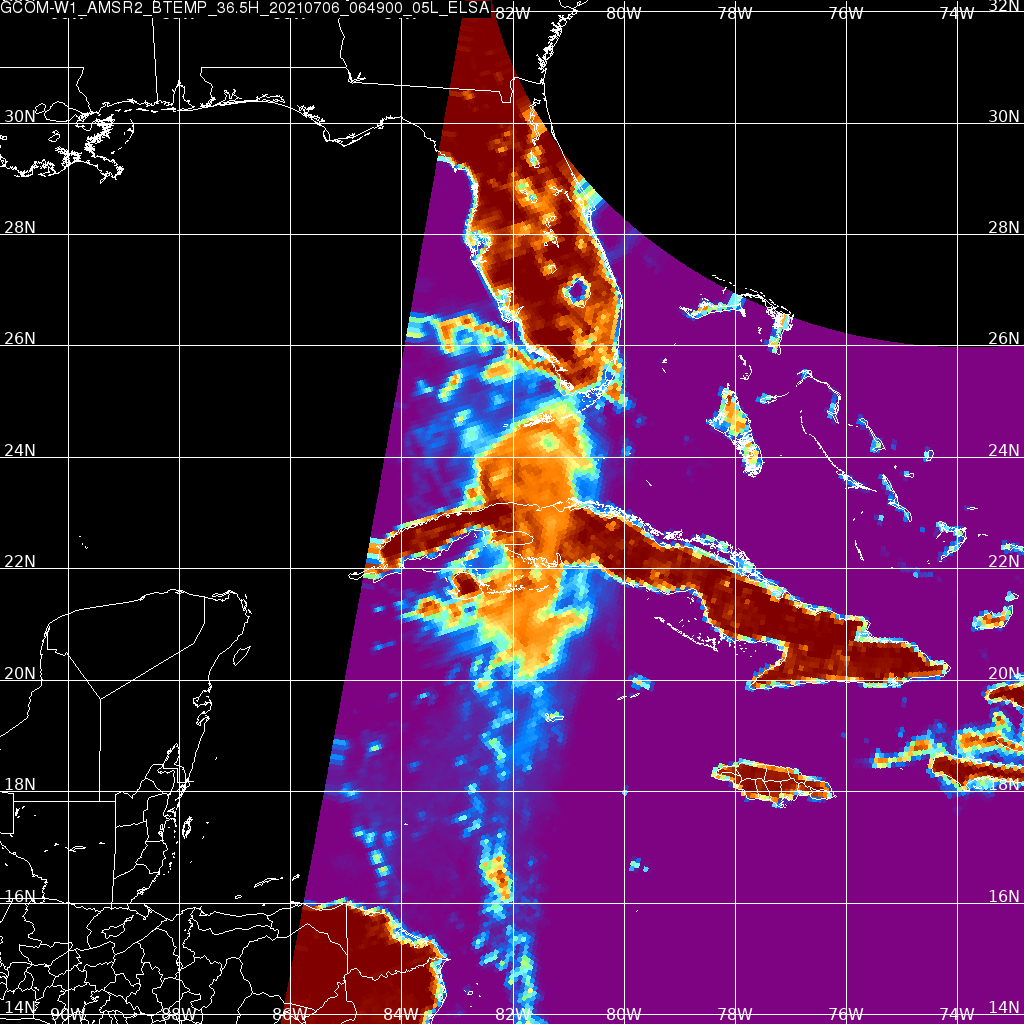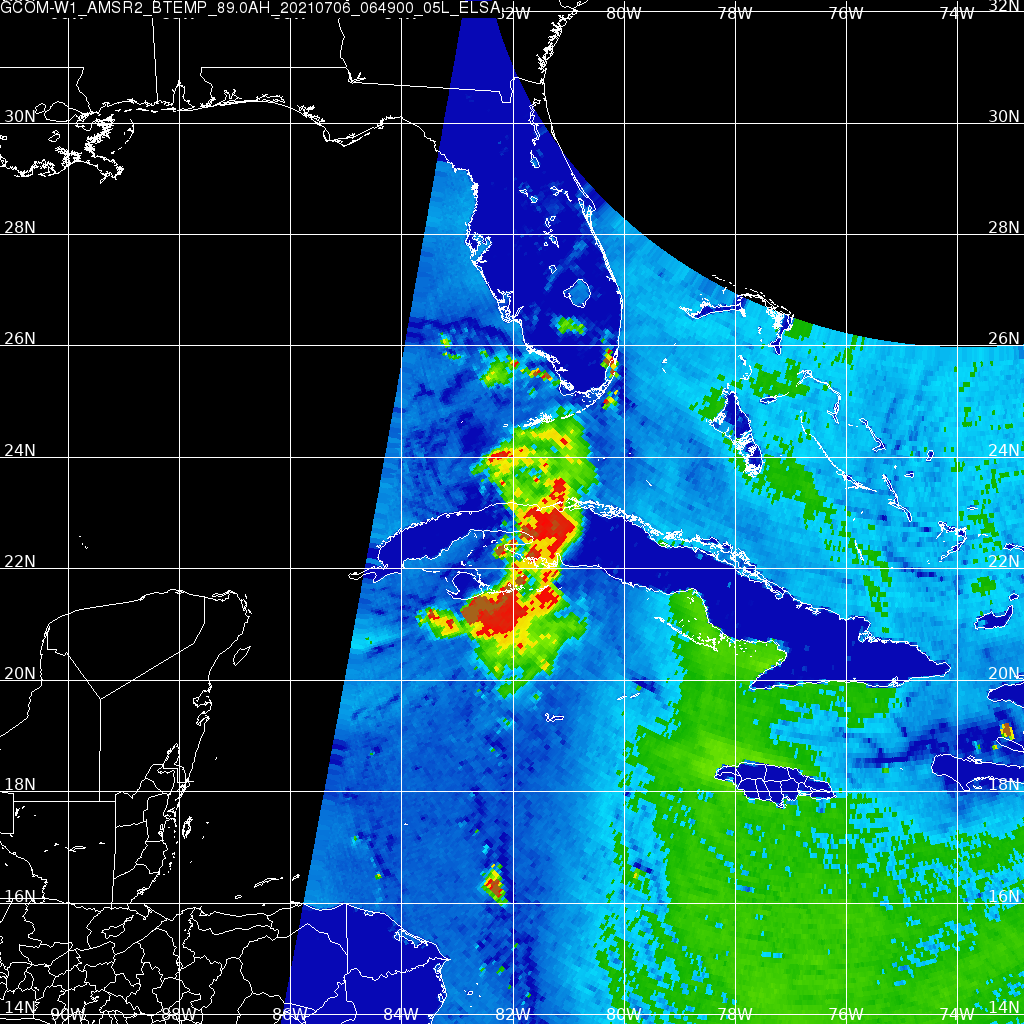Using Polar-Orbiting Satellite Imagery from Direct Broadcast sites to understand Elsa
AOML (The Atlantic Oceanographic and Meteorological Laboratory) maintains a Direct Broadcast antenna site that holds satellite imagery (created using CSPP — the Community Satellite Processing Package) created when a tropical system — such as Elsa — is within the download footprint of the AOML antenna. This imagery — particularly in the microwave — is useful to describe the system’s structure. The Day Night Band image above, from Suomi NPP at 0636 UTC, shows a non-symmetric storm with the bulk of clouds to the east and south of the surface center (at that time near 23.9 N, 82.3 W, i.e., in the Florida Straits to the south of Dry Tortuga). Rainfall, as diagnosed using MIRS algorithms and microwave ATMS (Advanced Technology Microwave Sounder) data from NPP, below, shows the asymmetry of the storm as well: almost all the diagnosed rain is east of the center. (It’s helpful that both infrared imagers and microwave sounders are on the same satellite!)
The GCOM-W1 (supported by JAXA) satellite also scanned Elsa shortly before 0700 UTC on 6 July. Microwave observations at ~36 GHz, below, and at 89 GHz, farther below, can help to characterize the structure of the storm. Indeed, observations at/around 85-89 GHz are used in the MIMIC TC product as described here.
In addition to the AOML site, the CIMSS Direct Broadcast site contains Polar Orbiting imagery in near-real time. The afternoon 88.2 GHz image from (NOAA-20) ATMS is shown below. Cold cloud tops associated with strong scattering by ice of the 88.2 GHz signal are apparent.
There are a multitude of polar orbiters such that observations show up in clusters of time. However, for a better time animation, it’s still best to rely on GOES-16! The animation below, from CSPP Geosphere, shows a sheared storm south and west of Ft Myers FL. Indeed, an 1800 UTC 6 July 2021 shear analysis from the CIMSS Tropical website (here, from this site), shows westerly shear of 25-30 knots.
GOES-16 True-Color imagery, 6 July 2021 from 1730 to 1920 UTC (Click to animate)
For the latest information on Elsa, consult the webpages of the National Hurricane Center, or the SSEC/CIMSS Tropical Weather Page.






